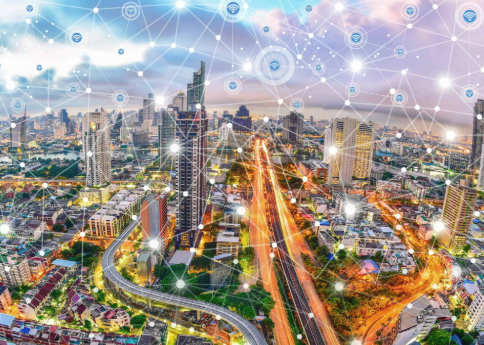How Smart Cities Are Building the Future of Urban Living

Smart cities represent a pivotal shift in urban development, harnessing technology to enhance efficiency and sustainability. By integrating data analytics, these cities optimize resources and improve public services. Transportation systems, empowered by innovations like autonomous vehicles, aim to reduce congestion and promote greener alternatives. This strategic approach not only addresses immediate urban challenges but also sets the stage for a more engaged citizenry, reshaping the future of urban living in unforeseen ways. What lies ahead in this transformative journey?
The Role of Technology in Smart Cities
In the evolving landscape of urban development, technology stands as a cornerstone of smart cities, fundamentally reshaping how urban environments function.
By leveraging data analytics and robust digital infrastructure, cities can optimize resources, enhance public services, and create sustainable environments.
This strategic integration of technology not only fosters efficiency but also empowers citizens, granting them greater autonomy and enhancing their overall quality of life.
Enhancing Transportation and Mobility
As urban populations continue to swell, enhancing transportation and mobility becomes a critical challenge that smart cities must address.
The integration of autonomous vehicles alongside robust public transit systems presents a transformative opportunity.
Sustainable Practices for a Greener Future
While urbanization presents numerous challenges, the adoption of sustainable practices in smart cities offers a pathway to a greener future.
Emphasizing green energy solutions and innovative waste management systems, these urban environments aim to reduce carbon footprints and promote ecological balance.
Read more: How Virtual Reality Is Changing the Travel Industry
Improving Quality of Life for Urban Residents
Recognizing the importance of enhancing urban living conditions, smart cities leverage technology and data-driven strategies to improve the quality of life for residents.
By prioritizing urban health initiatives and fostering community engagement, these cities create environments that empower individuals.
Integrating health services, promoting green spaces, and facilitating citizen participation are key components that collectively enhance well-being, ensuring a vibrant, connected, and liberated urban existence.
Conclusion
As smart cities continue to evolve, the potential for transformation looms on the horizon. Will urban landscapes seamlessly blend technology with sustainability, or will challenges undermine progress? The integration of advanced systems promises to redefine transportation, enhance quality of life, and foster community engagement. Yet, the path forward remains fraught with uncertainty. As cities navigate this intricate tapestry of innovation, the ultimate question persists: can they truly realize the vision of a harmonious urban future, or will they falter in the process?






